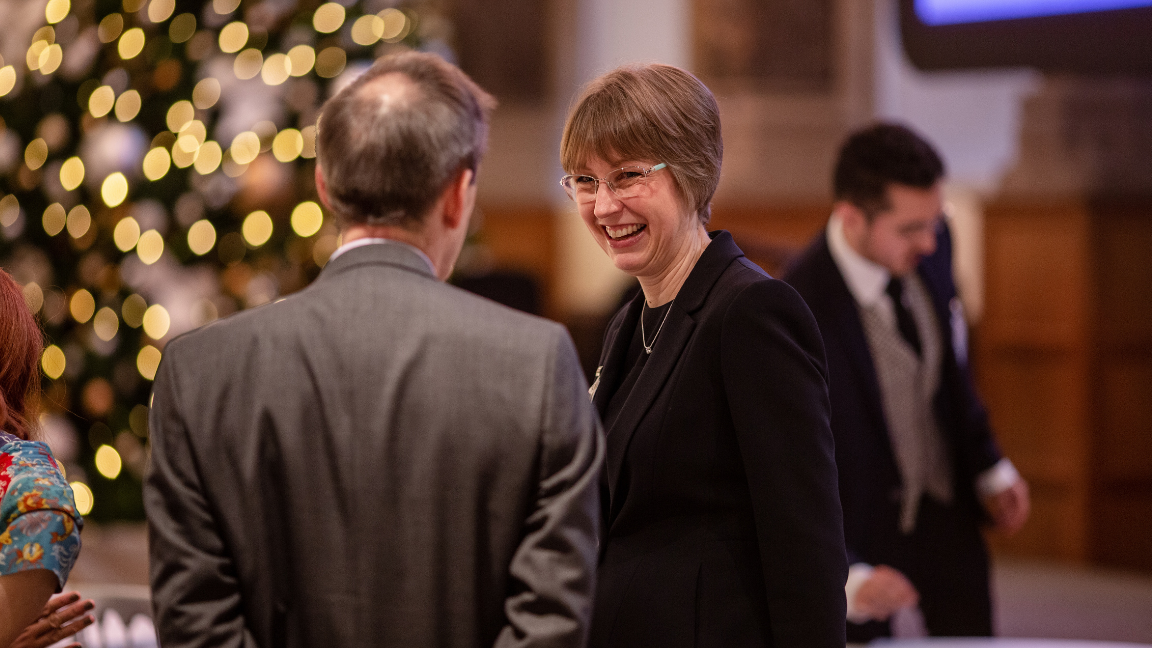Partnerships only work when there is genuine trust
Dr Jo Dixon-Hardy is the Director of Grow MedTech based at the University of Leeds. In this article, she shares her thoughts on building trust in partnerships.
Partnerships between organisations are strongest when built on trust, but in itself, trust can be a fragile thing. It takes time to build but can be broken far too quickly, even by just one project, if things go wrong.
We’re both proud and protective of the trust between the six Yorkshire universities involved in Grow MedTech. What does that trust mean in practice? I believe it means that Grow MedTech is an environment where all the partners feel able to take risks, develop ideas and resolve problems and the programme has been more effective as a result.
By building a partnership, we’re asking people to come on a journey with us, to share that journey. And for them to make that commitment, they have to trust us, and we have to take concrete steps to show we’re worthy of that trust.
What we’ve tried to do at every stage is put ourselves in others shoes. To think about what each institution brings to the table and how they can benefit from the programme. Each member of a team has different strengths, different priorities and different interests from the others, and recognising that is really important.
Authentic relationships
We didn’t start from a blank sheet. All bar one of the Grow MedTech partners had worked together as part of the Translate project – which they’d believed in enough to continue to fund themselves, when the grant came to an end. The same partners co-developed the bid for Grow MedTech funding and placed their trust in the University of Leeds to lead the application, thanks to our track record in running multi-partner consortia. Sheffield Hallam University was the only new partner in the proposal, but we did have a prior working relationship with them as well on which to build.
We were keenly aware how precious this foundation of trust was and didn’t assume we could leave it at that. To retain trust, you need to give it focused attention. Trust needs to be nurtured through openness, transparency and true collaborative working. It needs to be underpinned by authentic relationships between all partners.
The first step in building trust is to name it, make it part of the infrastructure that supports the programme. We did this through our team charter, which everyone involved signs up to. The charter is far more than a term of reference, covering responsibilities and what each person should do. Developed jointed by the executive committee, it lays out the principles by which we all behave and work together.
We also built trust within the team through the process of co-recruiting to the programme. Each Technology Innovation Manager (TIM) is an employee of one university partner, but the process of selecting them was a joint endeavour. The TIM job description and specification was agreed by the whole executive committee and each recruitment panel involved a representative from another of the university partners to interview applicants. Together with the charter, this helped to create a shared infrastructure to underpin trust between partners.
Trust at every level
As Programme Director, my day-to-day interactions tended to be with the executive committee, which includes representatives of each of the universities involved in Grow MedTech. By building trust at this level of the organisation, this ensured it rolled out more widely to the innovation teams that each of these representatives managed. Thanks to the charter – and to a similar approach by my colleague Danielle Miles with the TIMs – the trust amongst the executive is matched at all levels within Grow MedTech.
Openness and transparency
Key to trust is ensuring that knowledge is shared and partners’ voices are heard and we have developed some very pragmatic solutions to achieve this. All Grow MedTech projects are on one shared database and this somewhat unusual approach ensures that all partners stay in the loop. At the quarterly meetings of the executive committee, we go through a risk register, which includes anything that could impact on success and how to mitigate those risks. We talk through both highs and lows and how the programme is doing in relation to our targets. Again, it’s an open, honest discussion, with nothing held back.
The communication is never one way. All the partners can also see evidence of how we listen to their views and take those on board in how the programme runs. Each university involved in the programme is different – but that is why a partnership like Grow MedTech can do so much more than any one institution individually, whatever their size and funding.
We also ensure we’re listening on an individual basis. Some people feel more comfortable than others in challenging ideas in a group setting, so I made it my job to regularly check in with members of the executive committee to ask how they felt things were going and if we should be doing anything differently. My colleague Danielle, as Programme Lead, takes a similar approach with the TIMs.
An effective partnership
The trust that’s been generated and maintained throughout Grow MedTech does far more than simply ensure we feel positive about each other as partners. It has directly contributed to the success of the programme. The trust – and the shared space that creates for discussion – has enabled individuals to step away from thinking only about their institution and to consider instead what will benefit the overall programme. Grow MedTech has been a more effective multi-partner programme as a result.

